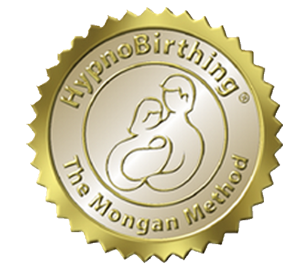
Positive Mental Rehearsal For Childbirth
29
Embrace the Power of Your Mind and Body
Manifesting Your Ideal Birth: A Journey in Positive Mental Rehearsal for Childbirth
Positive mental rehearsal for childbirth gives you a cutting edge in birth preparation. Your mind is so powerful and influential over your physical reality that you can shape your entire body and emotional landscape. For instance, the mind can create physical responses like pseudocyesis. This is where belief alone initiates bodily changes associated with pregnancy. But you are not pregnant.
Your thoughts can indeed prepare you for a more positive birth experience. By harnessing the power of positive mental rehearsal, you can align your mind and body, conditioning yourself for the empowering birth experience you want.
Let’s walk through a step-by-step journey to create that experience. Your brain doesn’t know the difference between an experience lived and an experience imagined with intention and emotion. By following these steps, you’ll be training your body to live the future you’ve chosen now, conditioning yourself physically, mentally, and emotionally for the birth you desire.
Step 1: Create Your Birth Vision in Your Mind
Mental rehearsal of the perfect birth starts with clarity. Specifically, you create clarity around the birth experience you want to create. This is more than a wish. It’s about setting your mind’s GPS toward your chosen destination. Imagine yourself already there. Experiencing that ideal birth with your senses, emotions, and body fully engaged is an example of mental rehearsal.
The body will always respond to the mind’s direction. Just as athletes rehearse their victories in their minds, you too can program your body and emotions for the most fulfilling, calm, and empowered birth.
What Does Your Ideal Birth Look and Feel Like?
In a quiet space, close your eyes and begin crafting the image. Tune in to each element:
The Space: Picture where you are. Are you in a peaceful, softly lit room, at home, in a birthing center, or in a supportive hospital environment?
The People: Visualize who’s with you. Maybe your partner is by your side, or your birth team surrounds you with quiet, reassuring support.
Sounds and Smells: Imagine the sounds you hear—calming music, whispered encouragement, maybe nothing but silence. Envision comforting scents like lavender or eucalyptus, filling the air, grounding and centering you.
Your Feelings: Sense the calm, confidence, and trust in your body and your ability to birth.
Write it Down
Now, write down every detail you want, allowing yourself to create a vivid picture in your mind of the perfect birth for you and your baby. Imagine you are talking to a good friend after birth, telling her every detail of how wonderful the experience was for you.
Remember: The more you see and feel every detail, the more your body believes it’s already happening. This is the power of conscious, positive mental rehearsal for childbirth.
Engage Your Emotions to Solidify the Vision
Feelings are the language of the body. You must feel the emotions of calm, trust, and readiness as you go through your visualization. This emotional energy is what tells your body, “This is real. I’m safe, and I’m ready.”
Anchor Feelings of Trust, Calm, and Confidence
As you mentally rehearse your ideal birth, amplify your emotional response. This is where you tell your brain, “This is my reality.”
Place your hand over your heart and feel your body soften and your muscles relax.
Imagine a wave of trust flowing from your heart to every part of your body, reassuring you that you are capable and that your body knows exactly what to do.
Step 3: Set Aside Time Each Day for Your Rehearsal
In the same way that an Olympic athlete practices not just physically but mentally, you, too, must commit to training your mind and body. Every day, spend a few minutes rehearsing, experiencing your birth in your mind as if it’s happening now.
Create a Daily Practice of Rehearsal
Commit to a mental rehearsal of the perfect birth vision each day at the same time. This consistency strengthens the neural pathways reinforcing your belief, embedding the experience into your body’s memory.
Find a quiet space, close your eyes, and allow yourself to sink into your chosen birth scenario.
Imagine it so clearly that you feel yourself living in the experience, noticing the relaxation in your body, the calmness in your breath, and the softness of the space around you.
Your body will begin responding to these positive images when you practice daily, creating a blueprint for a calm, confident, empowered birth. You are training your mind and body to expect this outcome, making it the most natural thing in the world when the day arrives.
Step 4: Reframe Obstacles as Growth Opportunities
Unfortunately, birth doesn’t always follow our script, so preparing your mind to stay calm and focused, even when unexpected moments arise, is essential. Mental rehearsal isn’t about ignoring challenges; it’s about seeing yourself as resilient and empowered no matter what unfolds. Visualize yourself moving through any unexpected scenarios with ease and empowerment, reinforcing that you are prepared for every possibility.
Visualize Overcoming Challenges with Strength and Calm
Imagine minor disruptions—a pause in labor or a change in pace—and see yourself responding calmly, adjusting with grace. Your brain is wired to problem-solve, so envision yourself flowing through these changes, maintaining your calm, and choosing how you respond. This creates resilience and an inner knowing that no matter what arises, you are ready and capable.
Every time you see yourself handling a challenge, you’re building neural patterns for resilience, peace, and flexibility. Remember, you’re not just visualizing—you’re programming yourself for a new level of calm and empowerment in the birth experience through positive mental rehearsal for childbirth.
Step 5: Seal It with Gratitude and Trust
Practice embodying the calm, confident feelings you want to experience in birth each day. When you feel anxiety or fear, use a deep breath to shift back to a place of peace, reminding your body how you intend to feel. After each rehearsal session, close your eyes and say a quiet “thank you” to yourself, your body, and this process. Gratitude is the powerful signal that tells your body the experience has already happened.
Express Gratitude for the Birth Already Created in Your Mind
Feel the warmth of gratitude in your heart, knowing that every time you visualize your ideal birth, you’re actively creating it. Let this gratitude signal to your body and mind that you are aligned with this future, sealing your belief in the peaceful, powerful birth you desire.
In practicing these steps, you’re not simply rehearsing for birth—you’re embodying it, aligning with it, and preparing every cell in your body to create the outcome you want. You are the creator of your experience, and by rehearsing with intention, trust, and gratitude, you’re preparing yourself for a birth grounded in peace, strength, and joy. And as research has shown, the body follows where the mind leads.
Embrace the Power of Your Mind and Body
You have the incredible power to shape your birth experience. By dedicating time to mental rehearsal, you’re not only envisioning a beautiful birth—you’re training your body and emotions to recognize it as real. With your vision, practice, and trust, you’re setting the stage for an experience of peace, strength, and love. This is the birth you’re creating—one breath, one affirmation, and one moment of powerful intention at a time.
Want to learn more about how to positive mental rehearsal for childbirth? Check out our class schedule here.




















Recent Comments